|
The National Park Service preserves unimpaired the natural and cultural resources and values of the National Park System for the enjoyment, education, and inspiration of this and future generations. Although best known for its great scenic parks, over half the areas of the National Park System preserve places and commemorate persons, events, and activities important in the nation's history. These range from archeological sites associated with prehistoric Indian civilizations to sites related to the lives of modern Americans. National Historical Parks and National Historic Sites are customarily preserved or restored to reflect their appearance during the period of their greatest historical significance. Search the over 400 National Park Units for one near you or look through the National Historical Parks and National Historic Sites below. National Historical Parks
For over a century people from around the world have come to rural Central Kentucky to honor the humble beginnings of our 16th president, Abraham Lincoln. His early life on Kentucky's frontier shaped his character and prepared him to lead the nation through Civil War. The country's first memorial to Lincoln, built with donations from young and old, enshrines the symbolic birthplace cabin.

"Oh my sweet little farm..." From the sweet little farm at the foot of Penn's Hill to the gentleman's country estate at Peace field, Adams National Historical Park is the story of "heroes, statesman, philosophers … and learned women" whose ideas and actions helped to transform thirteen disparate colonies into one united nation. 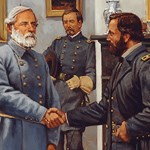
On April 9, 1865, the surrender of the Army of Northern Virginia in the McLean House in the village of Appomattox Court House, Virginia signaled the end of the nation's largest war. Two important questions about its future were answered. Could the nation survive a civil war intact, and would that nation exist without slavery? The answer to both was yes and a new nation was born. 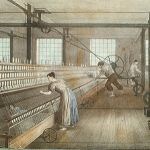
Birthplace of the American Industrial Revolution The Blackstone River runs from Worcester, MA to Providence, RI. Its waters powered the Slater Mill in Pawtucket, RI, America's first successful cotton spinning mill. This creative spark began the nation's transformation from Farm to Factory. Today, the Blackstone River Valley is a special type of National Park - a living landscape containing thousands of natural and historic treasures. 
"The Revolution was in the minds and hearts of the people..." Discover how one city could be the Cradle of Liberty, site of the first major battle of American Revolution, and home to many who espoused that freedom can be extended to all. 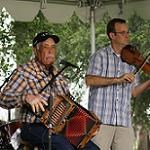
Cane River Creole, Louisiana
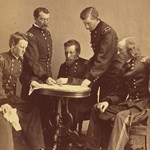
From Backcountry to Breadbasket to Battlefield -- and Beyond The Shenandoah Valley invites you to learn about its rich heritage, from Native Americans who first shaped the land, to pioneers of this frontier;this fertile area became one of the most important wheat producing regions of the entire South. The Valley also witnessed some of the most dramatic events of the Civil War,including the Battle of Cedar Creek, a decisive October 19,1864 Union victory. 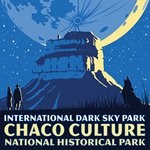
The Center of an Ancient World Today the massive buildings of the ancestral Pueblo peoples still testify to the organizational and engineering abilities not seen anywhere else in the American Southwest. For a deeper contact with the canyon that was central to thousands of people between 850 and 1250 A.D., come and explore Chaco through guided tours, hiking &biking trails, evening campfire talks, and night sky programs. 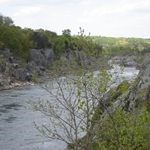
184.5 Miles of Adventure! Preserving America's early transportation history, the C&O Canal began as a dream of passage to Western wealth. Operating for nearly 100 years the canal was a lifeline for communities along the Potomac River as coal, lumber and agricultural products floated down the waterway to market. Today it endures as a pathway for discovering historical, natural and recreational treasures! 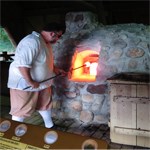
Witness America's Beginnings, from an English colony in 1607 to an independent nation in 1781. On May 13, 1607, Jamestown was established as the first permanent English settlement in North America. Three cultures came together –European, Virginia Indian and African–to create a new society that would eventually seek independence from Great Britain. On October 19, 1781, American and French troops defeated the British at Yorktown in the last major battle of the American Revolutionary War. 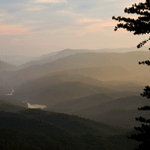
Mountain Gateway At Cumberland Gap, the first great gateway to the west, follow the buffalo, the Native American, the longhunter, the pioneer... all traveled this route through the mountains into the wilderness of Kentucky. Modern day explorers and travelers stand in awe at this great gateway and the many miles of trails and scenic features found in the park. 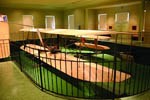
Lives of Consequence Three exceptional men from Dayton, Ohio, Wilbur Wright, Orville Wright and Paul Laurence Dunbar, found their creative outlet here through accomplishments and failures, and finally success. However, these men offered the world something far greater, they offered the world hope, and the ability to take a dream and make it a reality.
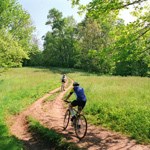
From First Settlement to First State Famous as the First State to ratify the Constitution, Delaware was born out of a conflict among three world powers for dominance of the Delaware Valley. From this beginning, the region developed a distinct character that tolerated diversity in religion and national origin and valued independence 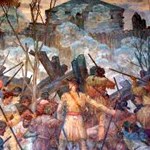
"Great things have been effected by a few men well conducted." The British flag would not be raised above Fort Sackville Feb. 25, 1779. At 10 a.m., the garrison surrendered to American Colonel George Rogers Clark. His American army, aided by French residents of the Illinois country, had marched through freezing floodwaters to gain this victory. The fort's capture assured United States claims to the frontier, an area nearly as large as the original 13 states.
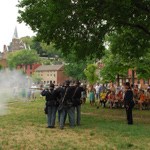
Step Back in Time A visit to this quaint, historic community, at the confluence of the Potomac and Shenandoah rivers, is like stepping into the past. Stroll the picturesque streets, visit exhibits and museums, or hike our trails and battlefields. Spend a day or a weekend. We have something for everyone, so come and discover Harpers Ferry!
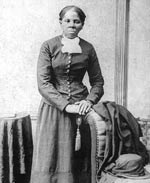
A Life Dedicated to God and Freedom Harriet Tubman was a deeply spiritual woman who lived her ideals and dedicated her life to freedom. She is the Underground Railroad's best known conductor and in the decades before the Civil War, repeatedly risked her life to guide nearly 70 enslaved people to new lives of freedom in the North.Tubman would recognize the landscapes protected in this new national monument on Maryland's Eastern Shore
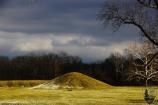
Sacred Spaces - A Place for Reflection in the Past and Today Earthen mounds and embankments forming huge geometric enclosures grace the landscape of the Ohio River Valley. These monumental structures were built by Native American hands almost 2,000 years ago. Hopewellian people gathered at these earthworks for feasts, funerals and rites of passage. Come learn about these sacred spaces and reflect upon the lives of these American Indians.
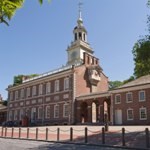
Independence, Pennsylvania

The Treasure of Jean Lafitte In Jean Lafitte's day, silver and gold filled a pirate's treasure chest, but today's treasures are people, places, and memories. Discover New Orleans' rich cultural mix. Learn Cajun traditions from people who live them. Watch an alligator bask on a bayou's bank. Walk in the footsteps of the men who fought at 1815's Battle of New Orleans. Follow the link to discover the treasure of Jean Lafitte.
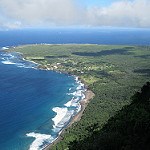
Enduring Spirit, Sacred Ground When Hansen's disease (leprosy) was introduced to the Hawaiian Islands, King Kamehameha V banished all afflicted to the isolated Kalaupapa peninsula on the north shore of Molokai. Since 1866, more than 8000 people, mostly Hawaiians, have died at Kalaupapa. Once a prison, Kalaupapa is now refuge for the few remaining residents who are now cured, but were forced to live their lives in isolation.

On the lava flows the people discovered a spirit... To survive in a hot and arid environment the native Hawaiians (kanaka maoli) used ancient fishing skills, including the building of fishponds, and the knowledge of the location of precious fresh water (wai) that flows into the many brackish pools throughout the park. The spirit of the people (poe) and the knowledge of the elders (kupuna) created a tradition of respect and reverence for this area.
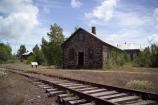
Keweenaw's Copper Story From 7,000 years ago to the 1900s people mined Keweenaw copper. Native peoples made copper into tools and trade items. Investors and immigrants arrived in the 1800s in a great mineral rush, developing thriving industries and cosmopolitan communities. Though the mines have since closed, their mark is still visible on the land and people.
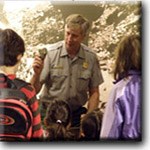
Welcome to the Park The Seattle unit of the Klondike Gold Rush National Historical Park preserves the story of the stampede to the Yukon gold fields and Seattle's crucial role in this event. The headlines of a Seattle newspaper on July 17, 1897, Gold! Gold! Gold! Gold! ignited dreams of easy riches in the minds of thousands as word of a rich gold strike in northwestern Canada. A dream that would prove all but dream.

Your Adventure in History Explore the timeless rainforests and majestic coastal vistas. Discover the rich heritage of the Native people. Unfold the dramatic stories of America's most famous explorers. The park encompasses sites along the Columbia River and the Pacific Coast. Follow in the footsteps of the explorers and have an adventure in history.
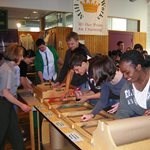
All was expectancy. Changes were coming…nobody could guess what. –Lucy Larcom Discover the continuing revolution. Lowell's water-powered textile mills catapulted the nation –including immigrant families and early female factory workers –into an uncertain new industrial era. Nearly 200 years later, the changes that began here still reverberate in our shifting global economy. Explore Lowell, a living monument to the dynamic human story of the Industrial Revolution.

"All the World is Welcome Here" --- Lyndon Baines Johnson
Lyndon B. Johnson National Historical Park tells the story of our 36th President beginning with his ancestors until his final resting place on his beloved LBJ Ranch. This entire "circle of life" gives the visitor a unique perspective into one of America's most noteworthy citizens by providing the most complete picture of any American president
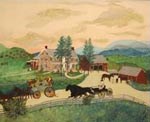
Autumn's Colorful Canvas
Visit during one of nature's most spectacular shows -autumn- and experience Vermont's only national park while it is bejeweled in vibrant fall colors. Take in yellows, oranges and reds of the park's hardwood forests while you experience the changing season and reflect on the story of stewardship. Hike trails and participate in the many fall programs and share in an enduring connection to the land.
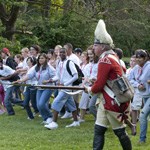
A Revolution begins - A Nation is born. At Minute Man National Historical Park the opening battle of the Revolution is brought to life as visitors explore the battlefields and structures associated with April 19, 1775, and witness the American revolutionary spirit through the writings of the Concord authors.

Where America Survived
Morristown National Historical Park commemorates the sites of General Washington and the Continental army's winter encampment of December 1779 to June 1780, where they survived through what would be the coldest winter on record.

The City on the Bluff. Throughout history, Natchez has always been a place of opportunity and is evident throughout Natchez National Historical Park. From the magnificent antebellum estate of John McMurran, to the downtown home of African American barber and diarist William Johnson, to the French Fort Rosalie, this diverse Mississippi River town has lent itself to opportunity.

The City That Lit the World "The town itself is perhaps the dearest place to live in, in all New England..nowhere in all America will you find more patrician-like houses, parks and gardens more opulent, than in New Bedford…all these brave houses and flowery gardens came from the Atlantic, Pacific, and Indian oceans. One and all, they were harpooned and dragged up hither from the bottom of the sea."
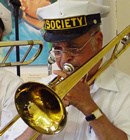
Experience Jazz Music Where it all Began Only in New Orleans could there be a National Park for jazz! Drop by our French Market visitor center to inquire about musical events around town. In the mood for a world class musical experience? Attend a jazz concert or ranger performance at the new state of the art performance venue in the Old U.S. Mint.
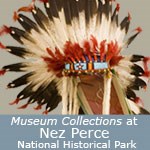
Celebrating 50 Years! Established in 1965 to tell the story of the Nez Perce (Nimiipuu) people. Spread out over four states, following the route of the 1877 conflict this park offers something for everyone. The history and culture of the Nez Perce surrounds the park. Discover how the Nimiipu adapted and today thrive continuing to make the land their own.
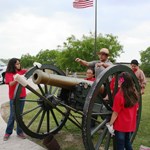
First clash of the U.S.-Mexican War
On May 8, 1846, United States and Mexican troops clashed on the prairie of Palo Alto. The battle was the first in a two-year long war that changed the map of North America. Palo Alto Battlefield National Historical Park preserves the site of this notable battle and provides an understanding of the causes, events, and consequences of the U.S.-Mexican War.

A Revolutionary Idea
Cotton & silk for clothing; locomotives for travel; paper for books & writing letters; airplanes, & more. What do they have in common? They all came from the same place - Paterson, NJ.
In 1791, Paterson, America's first planned industrial city, was established, centered around the Great Falls of the Passaic River. From humble mills would rise industries that changed the face of the United States.

Gateway to the Plains
In the midst of piñon, juniper, and ponderosa pine woodlands in the Sangre de Cristo Mountains not far from Santa Fe, the remains of Indian pueblos stand as meaningful reminders of people who once prevailed here. Now a national historical park demonstrates to modern visitors the cultural exchange and geographic facets central to the rich history of the Pecos Valley.

A Furious Journey of Life or Death was Determined by the Gods
Imagine you had just broken the sacred laws, the kapu, and the only punishment was death. Your only chance of survival is to elude your pursuers and reach the Pu'uhonua, a place of refuge. The Pu'uhonua protected the kapu breaker, defeated warriors, as well as civilians during the time of battle. No harm could come to those who reached the boundaries of the place of refuge.
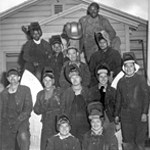
United We Can Win! Explore and honor the efforts and sacrifices of American civilians on the World War II home front. Find out how they lived, worked and got along. Many faces, many stories, many truths weave a complex tapestry of myths and realities from this time of opportunity and loss.

Come Explore 2000 Years of Human History in the Caribbean Salt River Bay National Historical Park and Ecological Preserve uniquely documents the human and natural Caribbean world from the earliest indigenous settlements in the central Caribbean to their clash with seven different colonial European powers to the present day.
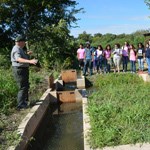
A New God and King After 10,000 years, the people of South Texas found their cultures, their very lives under attack. In the early 1700s Apache raided from the north, deadly diseases traveled from Mexico, and drought lingered. Survival lay in the missions. By entering a mission, they foreswore their traditional life to become Spanish, accepting a new religion and pledging fealty to a distant and unseen king.

Where Your Imagination Can Travel to the 19th Century. Stand on the stern of BALCLUTHA, face west to feel the fresh wind blowing in from the Pacific Ocean. Located in the Fisherman's Wharf neighborhood, San Francisco Maritime National Historical Park offers the sights, sounds, smells and stories of Pacific Coast maritime history.
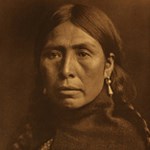
Peace Over War.
San Juan Island is well known for splendid vistas, saltwater shore, quiet woodlands, orca whales and one of the last remaining native prairies in the Puget Sound/Northern Straits region. But it was also here in 1859 that the United States and Great Britain nearly went to war over possession of the island, the crisis ignited by the death of a pig.

A Crucial American Victory Here in the autumn of 1777, American forces met, defeated and forced a major British army to surrender. This crucial American victory in the Battle of Saratoga renewed patriots' hopes for independence, secured essential foreign recognition and support, and forever changed the face of the world.

Currents of Change
On an island amid towering spruce and hemlock, Sitka National Historical Park preserves the site of a battle between invading Russian traders and indigenous Kiks.ádi Tlingit. Park visitors are awed by Tlingit and Haida totem poles standing along the park's scenic coastal trail, and the restored Russian Bishop's House speaks of Russia's little known colonial legacy in North America.

Where Modern America Was Invented Thomas Edison's home and laboratory are a step back in time, when machines were run by belts and pulleys and music was played on phonographs. Where to the passerby, the buildings betray little evidence of the industries they once started. Discover where America's greatest inventor changed our world forever.

Always Changing - Forever the Same More than just adobe, plaster, and wood, these ruins evoke tales of life and land transformed by cultures meeting and mixing. Father Kino's 1691 landmark visit to an O'odham village when he established Mission Tumacácori was just one event among many. Wave after wave of change has swept or crept across this realm - this land and its people are not static. Come visit and experience this heritage.
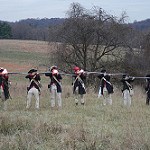
Determined to Persevere Valley Forge was the site of the 1777-78 winter encampment of the Continental Army. The park commemorates the sacrifices and perseverance of the Revolutionary War generation and honors the ability of citizens to pull together and overcome adversity during extraordinary times.
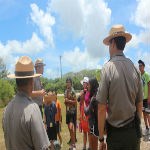
Experience Your National Park At War in the Pacific National Historical Park, the former battlefields, gun emplacements, trenches, and historic structures all serve as silent reminders of the bloody World War II battles that raged across the Pacific. The park is known for its historic resources, but the verdant jungles, sandy beaches, turquoise waters, and stunning coral reefs also beckon visitors and residents to enjoy Guam.
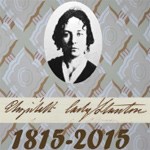
Discover How the Fight for Civil Rights can Change the World Women's Rights National Historical Park tells the story of the first Women's Rights Convention held in Seneca Falls, NY on July 19-20,1848. It is a story of struggles for civil rights, human rights, and equality, global struggles that continue today. The efforts of women's rights leaders, abolitionists, and other 19th century reformers remind us that all people must be accepted as equals.
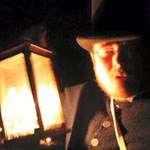
"...Even if it's as Big as a Mountain!" The first railroad to circumvent the Allegheny Mountains, the Allegheny Portage Railroad was the finishing piece of the Pennsylvania Mainline Canal. "The Portage," opened in 1834, marking the first time that there was one, direct route between Philadelphia and Pittsburgh. All things to all people, it served merchants, passengers, slaves in pursuit of freedom, and soldiers from the Mexican War.

Victory From Within: Exploring the Stories of Prisoners of War The Camp Sumter military prison at Andersonville was one of the largest Confederate military prisons during the Civil War. During the 14 months the prison existed, more than 45,000 Union soldiers were confined here. Of these, almost 13,000 died here. Today, Andersonville National Historic Site is a memorial to all American prisoners of war throughout the nation's history.
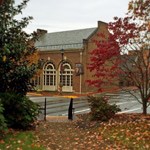
The Constitution President The Andrew Johnson National Historic Site and National Cemetery interprets the life and legacy of the 17th President. Andrew Johnson's presidency, 1865-1869, illustrates the United States Constitution at work following President Lincoln's assassination and during attempts to reunify a nation torn by civil war. His presidency shaped the future of the United States and his influences continue today.
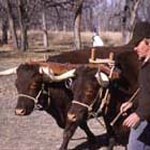
Castle of the Plains Bent's Old Fort National Historic Site features a reconstructed 1840s adobe fur trading post on the mountain branch of the Santa Fe Trail where traders, trappers, travelers, and the Cheyenne and Arapaho tribes came together in peaceful terms for trade. Today, living historians recreate the sights, sounds, and smells of the past with guided tours, demonstrations and special events.

Freedom is a Constant Struggle Centered on the north slope of Beacon Hill, the African American community of 19th century Boston led the city and the nation in the fight against slavery and injustice. These remarkable men and women, together with their allies, were leaders in Abolition Movement, the Underground Railroad, the Civil War, and the early struggle for equal rights and education.
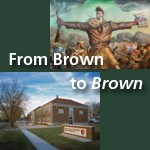
The Road to Justice The story of Brown v. Board of Education, which ended legal segregation in public schools, is one of hope and courage. When the people agreed to be plaintiffs in the case, they never knew they would change history. The people who make up this story were ordinary people. They were teachers, secretaries, welders, ministers and students who simply wanted to be treated equally.

A Poet of the People Carl Sandburg provided a popular voice for the American people of the twentieth century and still speaks to us through his words, songs and the beauty and serenity of Carl Sandburg Home National Historic Site. Explore Sandburg's legacy and Experience Your America!
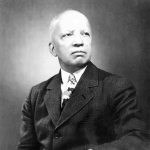
Dr. Carter G. Woodson: The Father of African American History Before Dr. Carter G. Woodson, there was very little accurate written history about the lives and experiences of Americans of African descent. Today a National Historic Site, Dr. Woodson's home served as the headquarters for the Association for the Study of African American Life and History. Dr. Woodson established Negro History Week here in 1926, which we celebrate today as Black History Month.
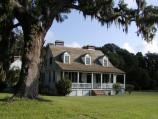
The Forgotten Founder Charles Pinckney was a principal author and a signer of the United States Constitution. This remnant of his coastal plantation is preserved to tell the story of a "forgotten founder," his life of public service, the lives of enslaved African Americans on South Carolina Lowcountry plantations and their influences on Charles Pinckney.
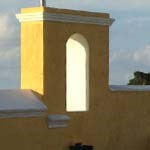
Christiansted NHS-Gem of the Caribbean No place in the Caribbean still demonstrates the architectural, economic, and political influence of Europe like Christiansted National Historic Site. Come wander through 18th century buildings in one the Caribbean's few urban parks- it is a unique experience that you will never forget.
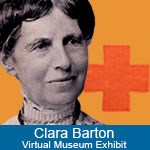
She was a remarkable person Clara Barton dedicated her life and energies to help others in times of need - both home and abroad, in peacetime as well as during military emergencies. Glen Echo was her home the last 15 years of her life and the structure illustrates her dedication and concern for those less fortunate than herself.
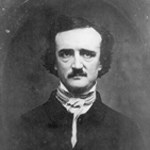
"I had walled the monster up within the tomb!" Described as horrifying, mystifying, and full of genius, Poe's writing has engaged readers all over the globe. The six years Poe lived in Philadelphia were his happiest and most productive. Yet Poe also struggled with bad luck, personal demons and his wife's tuberculosis. In Poe's humble home, reflect on the human spirit surmounting crushing obstacles, and celebrate Poe's astonishing creativity.

Ike, Gettysburg, and the Cold War Eisenhower National Historic Site is the home and farm of General and President Dwight D. Eisenhower. Located adjacent to the Gettysburg Battlefield, the farm served the President as a weekend retreat and a meeting place for world leaders. With its peaceful setting and view of South Mountain, it was a much needed respite from Washington and a backdrop for efforts to reduce Cold War tensions.

Val-Kill "The greatest thing I have learned is how good it is to come home again." Eleanor Roosevelt This simple statement expresses her love for the modest house she called Val-Kill. The only National Historic Site dedicated to a first lady, Val-Kill welcomes visitors in the style of Mrs. Roosevelt. Come and be part of the entire Roosevelt Experience at Val-Kill.
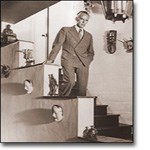
O'Neill in California America's only Nobel Prize winning playwright, Eugene O'Neill, chose to live in Northern California at the height of his writing career. Isolated from the world and within the walls of his home, O'Neill wrote his final and most memorable plays;The Iceman Cometh, Long Day's Journey Into Night, and A Moon for the Misbegotten.
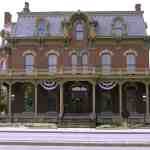
Honoring the First Ladies Two properties, the home of First Lady Ida Saxton McKinley and the seven story 1895 City Bank Building, are preserved at this site, which honors the lives and accomplishment of our nation's First Ladies. The site is managed by the National Park Service and operated by the National First Ladies Library.

Abraham Lincoln's legacy lives... Explore Ford's Theatre NHS, discover Abraham Lincoln's life in Washington DC, the struggle for a united country, and the motivation behind Lincoln's Assassination.The National Park Service and the Ford's Theatre Society presents a variety of programs year round.
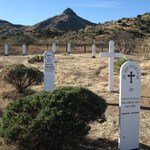
Sesquicentennial of Fort Bowie Fort Bowie commemorates the bitter conflict between Chiricahua Apaches and the U.S. military - a lasting monument to the bravery and endurance of U.S. soldiers in paving the way for settlement and the taming of the western frontier. It provides insight into a "clash of cultures," a young nation in pursuit of "manifest destiny," and the hunter/gatherer society fighting to preserve its existence.
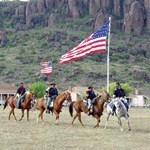
A Frontier Post Fort Davis is one of the best surviving examples of an Indian Wars' frontier military post in the Southwest. From 1854 to 1891, Fort Davis was strategically located to protect emigrants, mail coaches, and freight wagons on the Trans-Pecos portion of the San Antonio-El Paso Road and on the Chihuahua Trail.
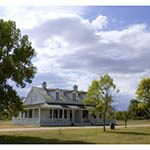
Crossroads of a Nation Moving West Originally established as a private fur trading fort in 1834, Fort Laramie evolved into the largest and best known military post on the Northern Plains before its abandonment in 1890. This "grand old post" witnessed the entire sweeping saga of America's western expansion and Indian resistance to encroachment on their territories.
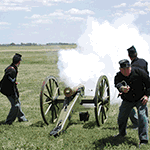
Home to the Guardians of the Santa Fe Trail Discover a complete and authentic army post from the 1860s -1870s! This well-preserved fort on the Santa Fe Trail shares a tumultuous history of the Indian Wars era. The sandstone constructed buildings sheltered troops who were known as the Guardians of the Santa Fe Trail.
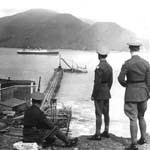
Immerse Yourself in San Francisco History in a Dramatic Setting From its vantage point overlooking the spectacular Golden Gate, Fort Point defended the San Francisco Bay following California's Gold Rush through World War II. Its beautifully arched casemates display the art of 3rd system brick masonry and interacts gracefully with the Golden Gate Bridge.
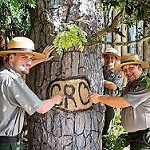
England's First Home in the New World
Fort Raleigh National Historic Site protects and preserves known portions of England's first New World settlements from 1584 to 1590. This site also preserves the cultural heritage of the Native Americans, European Americans and African Americans who have lived on Roanoke Island.

Forging a Nation: Fort Scott in the Mid Nineteenth Century Promises made and broken! A town attacked at dawn! Thousands made homeless by war! Soldiers fighting settlers! Each of these stories is a link in the chain of events that encircled Fort Scott from 1842-1873. All of the site's structures, its parade ground, and its tallgrass prairie bear witness to this era when the country was forged from a young republic into a united transcontinental nation.
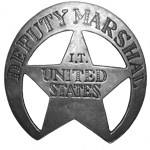
Discover the Past
From the establishment of the first Fort Smith on December 25, 1817, to the final days of Judge Isaac C. Parker's jurisdiction over Indian Territory in 1896, Fort Smith National Historic Site preserves almost 80 years of history. Explore life on the edge of Indian Territory through the stories of soldiers, the Trail of Tears, dangerous outlaws, and the brave lawmen who pursued them.
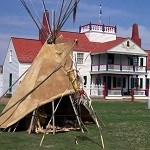
The Grandest Fort on the Upper Missouri River
Between 1828 and 1867, Fort Union was the most important fur trade post on the Upper Missouri River. Here, the Assiniboine and six other Northern Plains Indian Tribes exchanged buffalo robes and smaller furs for goods from around the world, including cloth, guns, blankets, and beads. A bastion of peaceful coexistence, the post annually traded over 25,000 buffalo robes and $100,000 in merchandise.
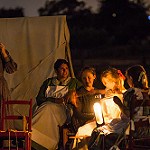
Grand Emporium of the West Explore the lands and structures at the center of fur trade and military history in the Pacific Northwest. Learn about the diverse cultures who lived and worked here. Enjoy relaxing trails along the Columbia River and Village. Experience costumed programs, hands-on education activities, engaging living history events, creative media and a world-class archaeology collection. Connect to the past.
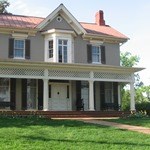
"I will unite with any one to do right, and with no one to do wrong!" Walk the halls of Cedar Hill, home of the famed abolitionist Frederick Douglass. Born into slavery, Douglass escaped to spend his life fighting for justice and equality for all people. His tireless struggle, brilliant words, and inclusive vision of humanity continue to inspire and sustain people today.
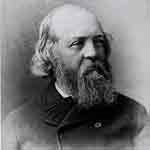
Designing an American Landscape
Frederick Law Olmsted (1822-1903) is recognized as the founder of American landscape architecture and the nation's foremost parkmaker. Olmsted moved his home to suburban Boston in 1883 and established the world's first full-scale professional office for the practice of landscape design. During the next century, his sons and successors perpetuated Olmsted's design ideals, philosophy, and influence.

Who was Albert Gallatin Albert Gallatin is best remembered for his thirteen year tenure as Secretary of the Treasury during the Jefferson and Madison administrations. In that time he reduced the national debt, purchased the Louisiana Territory and funded the Lewis &Clark exploration. Gallatin's accomplishments and contributions are highlighted at Friendship Hill, his restored country estate.
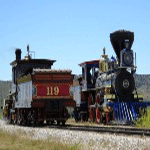
The Joining of a Nation
May 10, 1869 the Union and Central Pacific Railroads joined their rails at Promontory Summit, Utah Territory and forged the destiny of a nation. Golden Spike National Historic Site shares the stories of the people and settings that define the completion of the first Transcontinental Railroad.
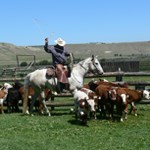
Cowboys and Cattlemen
Wide open spaces, the hard-working cowboy, his spirited cow pony, and vast herds of cattle are among the strongest symbols of the American West. Once the headquarters of a 10 million acre cattle empire, Grant-Kohrs Ranch National Historic Site preserves these symbols and commemorates the role of cattlemen in American history.
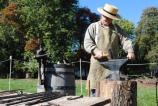
Hampton Is The Story Of All People
Enslaved African Americans, European indentured servants, industrial and agricultural workers, and owners. It is also the story of the economic and moral changes that made forced servitude in the United States obsolete.
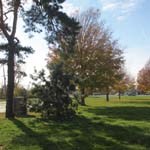
Home to a People's President President
Harry S Truman took America from its traditional isolationism into the age of international involvement. Despite his power, he never forgot where he came from. Today, visitors can experience the surroundings Truman knew as a young man of modest ambition through his political career and final years as a former president.
|
|
|
Last updated: October 14, 2022
